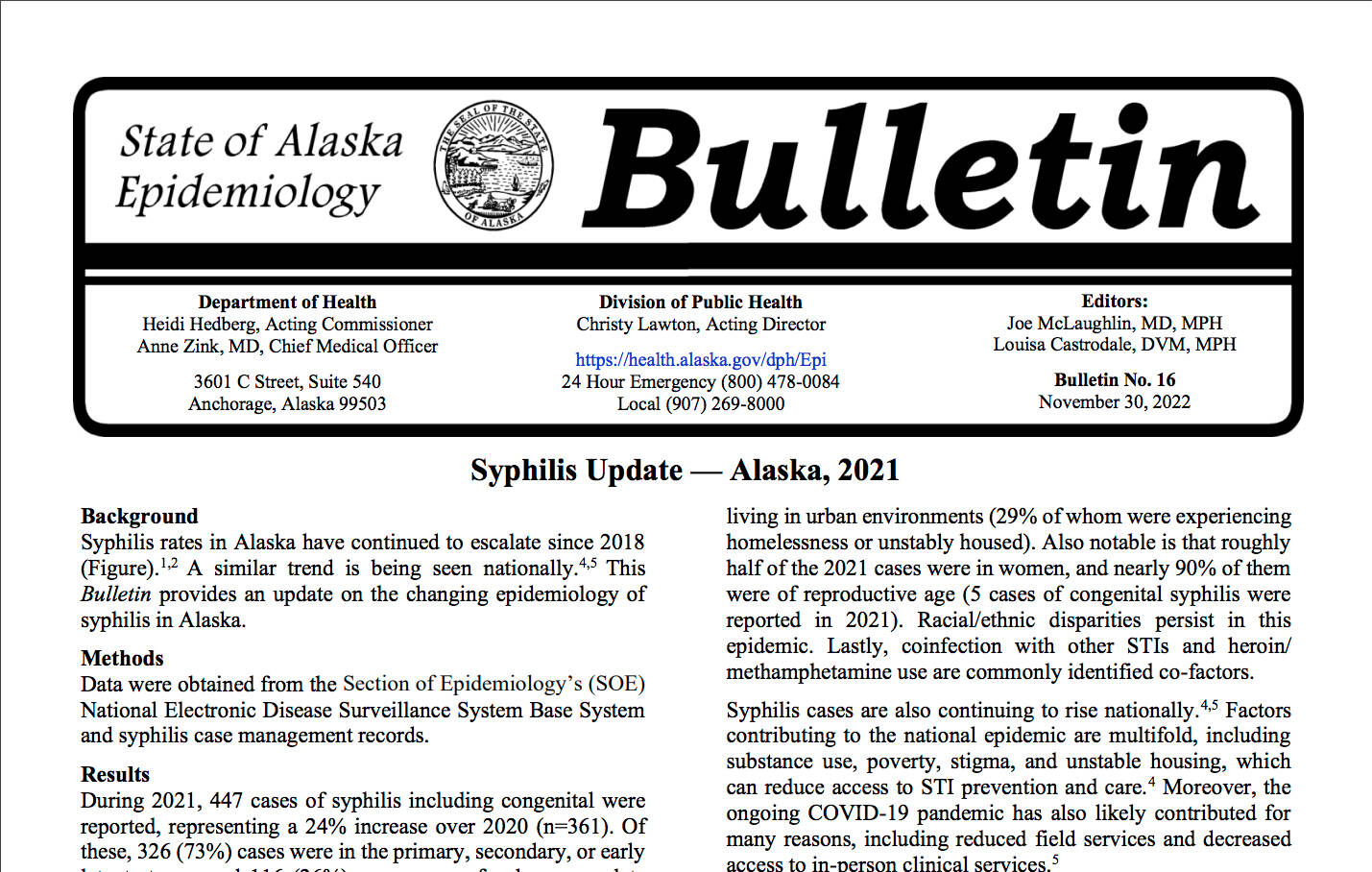Reported cases of syphilis continue to increase year over year in Alaska, part of a continuing statewide epidemic that began with a 2018 outbreak.
Results of the 2021 Syphilis Update, published in November in the State of Alaska Epidemiology Bulletin, were discussed during Wednesday’s Public Health ECHO, hosted via Zoom and livestreamed to Facebook.
Initially, the outbreak was largely identified within “the men who have sex with men community,” State HIV/STD Program Manager Kamala Stiner said. New results indicate that syphilis is increasingly, and now predominantly, impacting those who are heterosexual.
“The epidemiology of (sexually transmitted infections) in Alaska is kind of changing, the landscape is really changing,” she said.
The number of cases reported in 2021 were 447, a 26.6% increase over the 353 reported in 2020. That’s a smaller increase than the 45.9% reported between 2019 and 2020, but still marks the fourth consecutive year of a significant increase.
Of the cases reported in 2021, 97% impacted people identified as cisgender, which describes someone whose gender identity corresponds to one traditionally associated with the anatomical sex the person had at birth. The significant majority of cases were identified in residents of urban communities, including Anchorage, the Matanuska Susitna Valley, Juneau and Fairbanks. Men and women are being impacted in nearly equal regard, with men accounting for 53% and women 47%.
“Racial/ethnic disparities persist in this epidemic,” the bulletin reads.
Co-factors identified in the report include coinfection with other STIs and the use of heroin or methamphetamine.
To combat the ongoing rise in cases, which the report mentions is also being observed nationally, Stiner said screening and testing is the best way to mitigate risk. Destigmatizing conversations about STIs and HIV is also key, she said.
“Talk to your providers, your partners, about your status. Get tested,” she said. “This is something that happens to many people, no matter their lifestyle or their background.”
Treatment is available at public health centers around the state.
For those at high risk, who have multiple sexual partners or anonymous sexual partners, the recommendation by health officials is to get tested as often as every three months.
Syphilis is a bacterial infection spread primarily through sexual contact. The disease typically starts as a painless sore that may not be noticed at first, and spreads from person to person via skin or mucous membrane contact with these sores. The disease is easily curable and early treatment after exposure can prevent infection. When left untreated, however, syphilis can affect the heart, brain and other organs in the body.
To find a location near you that provides STD testing, visit gettested.cdc.gov.
For more information about Alaska’s syphilis outbreak, visit std.dhss.alaska.gov.

